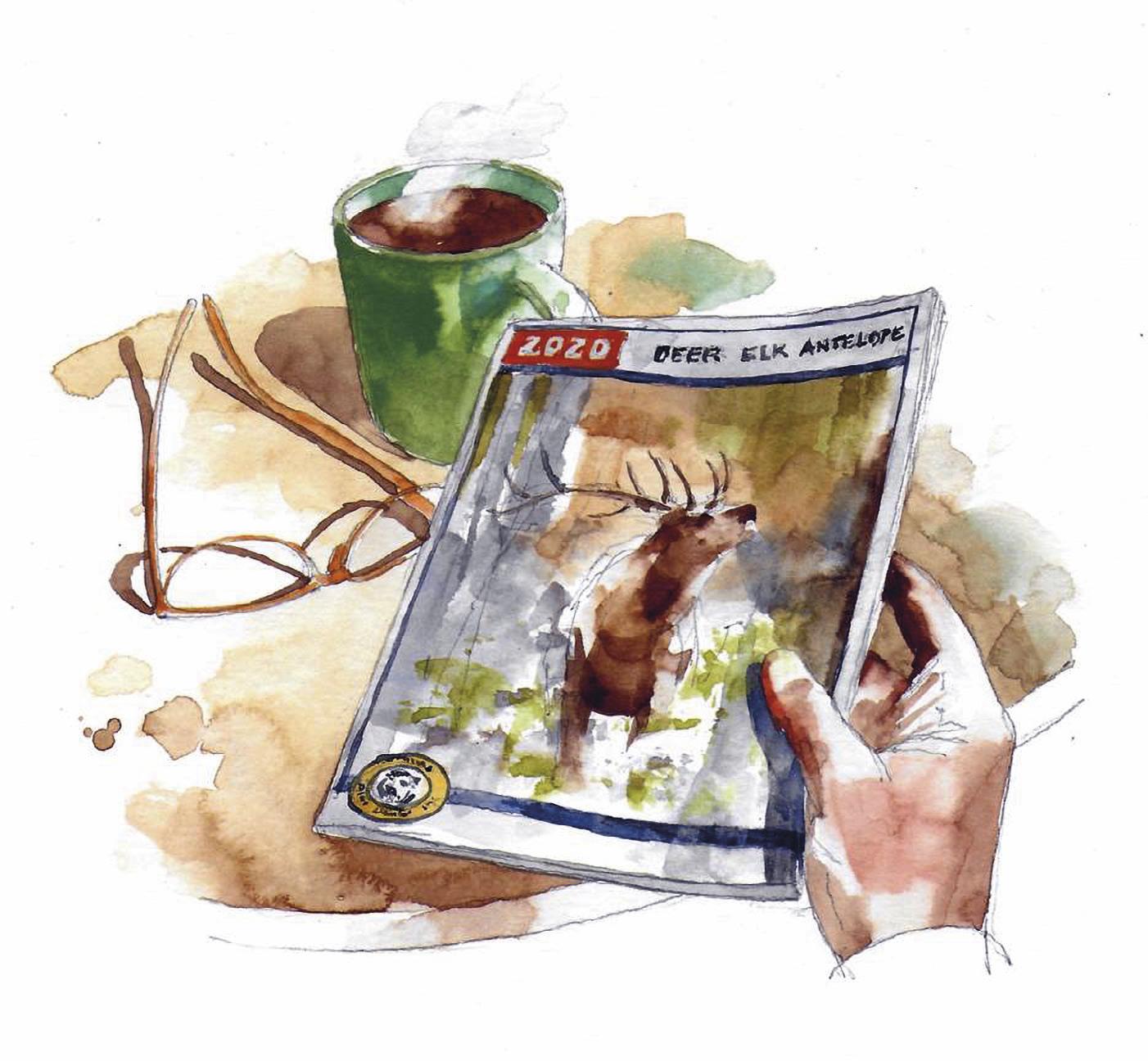
3 minute read
OUTDOORS PORTRAIT Trout-Perch
Trout-perch
Percopsis omiscomaycus
By Jim Pashby
SCIENTIFIC NAME Percopsis is Greek for “perchlike,” and omiscomaycus comes from an Algonquin Indian name related to “trout.”
Some interesting geology and a mid19th-century treaty resulted in Montana becoming the westernmost range in the Lower 48 for several fish species native to the United States.
The absence of natural barriers on the Missouri River, except the series of falls downstream of what is now Great Falls, meant that channel catfish, sauger, shovelnose sturgeon, and pallid sturgeon were able to range west from the central United States, where they were much more abundant, as far upstream as today’s Montana. Even without the falls, these warmwater species likely would not have survived much farther up the Missouri because the water was too cold. The river upstream historically received enough mountain snowmelt to sustain westslope cutthroat trout.
Placement of the United States’ border with Canada along the 49th parallel (part of the Oregon Treaty of 1846 between the U.S. and Great Britain) meant that a tiny portion of the Saskatchewan Watershed dips into northern Montana at the eastern border of Glacier National Park. There you will find four species originally found nowhere else in Montana: northern pike, lake whitefish, deepwater sculpin, and one of the oddest fish you’ve never heard of, the trout-perch.
IDENTIFICATION
The trout-perch is neither a trout nor a perch but has characteristics of both. Like salmonids, it has an adipose fin—that little flap between the tail and the dorsal (top) fin. But unlike a trout, a trout-perch also has spines in its dorsal and some other fins, like a perch and other warmwater species.
Though not a minnow, the trout-perch could be easily mistaken for one. It is a small, plain fish, averaging four inches long, pale olive in color with three rows of dark spots along the sides. Large eyes sit high on a scaleless head and the tail fin is forked.
The trout-perch’s closest relative is the sand roller, a species found only in the lower Columbia and Clearwater river systems of Idaho, Oregon, and Washington.
RANGE
Trout-perch are found from Alaska southeast through most of Canada and the Great Lakes states and into the Ohio River Basin. In Montana, the species has been found only in Lower Saint Mary Lake and the associated Saint Mary Canal.
HABITAT
The trout-perch is a fish of clear lakes and streams with sandy or gravel bottoms. This nocturnal species is known as a “nutrient transporter” because it swims up from deep water at night to feed on aquatic insects, then returns to the depths to spend the day hiding amid sticks and gravel, or in deep pools of streams.
REPRODUCTION
Each spring, one- and two-year-old troutperch migrate from deep water to shallows to spawn. Most males and many larger females die after spawning. Relatively few spawn twice in a lifetime.
HUMAN USE
Though trout-perch are consumed by walleye, northern pike, lake trout, and burbot, they are rarely used as bait because it’s difficult to seine the species from the deep waters where they spend most of their time. As for their angling value, trout-perch are too small and live in waters too deep to warrant the effort.
CONSERVATION STATUS
Found in only one spot in Montana, the trout-perch is considered a state fish species of special concern. Because trout-perch can die off when lakes and streams get too warm, it may be an indicator species for climate change.
Elsewhere in its continental range, the trout-perch remains relatively common except in heavily polluted waters.
THE OUTSIDE IS IN US ALL.

Whether it’s through fishing, camping, boating, mountain biking, hiking, wildlife watching, or bowhunting for elk in the Kootenai National Forest, Montana is a state where everyone can find their own special way to connect with the natural world. Around here, the outside is in us all. PHOTO BY DONALD M. JONES
MONTANA OUTDOORS $3.50








